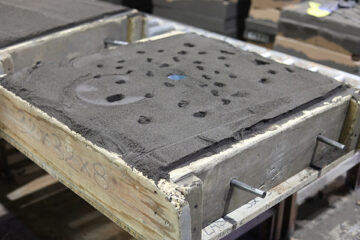Sand casting is a common method used for manufacturing valves. This process is suitable for producing both simple and complex valve shapes, and it is particularly cost-effective for small to medium-sized production runs. Here’s an overview of the steps involved in making valves through the sand casting process:
– The process begins with the creation of a pattern, which is a replica of the final valve. The pattern can be made from wood, metal, or other materials and is designed to create a cavity in the sand mold.
2. Mold Preparation:
– The pattern is placed in a box, and molding sand is packed around it to create the mold. This process is known as ramming. The mold consists of two halves – the cope (upper) and the drag (lower).
3. Core Production (if needed):
– Cores, which are inserts made of sand or other materials, may be used to create internal features of the valve, such as cavities or passages. Cores are positioned in the mold before the casting process.
4. Mold Assembly:
– The cope and drag are assembled, creating a complete mold with the pattern or patterns enclosed. The mold cavity replicates the shape of the final valve.
5. Molten Metal Pouring:
– The molten metal, often an alloy such as bronze or brass, is poured into the mold cavity through a channel called a sprue. The metal fills the space previously occupied by the pattern.
6. Solidification:
– After pouring, the metal begins to cool and solidify within the mold. The solidification process may take some time, depending on the size and complexity of the valve.
7. Mold Breakout:
– Once the metal has solidified, the sand mold is broken apart to reveal the rough casting. This process involves removing the cope and drag, as well as any cores, from the solidified metal.
8. Cutting and Finishing:
– The rough casting is then cut from the sprue and gates (channels that guide the molten metal). Any excess material, called flashing, is removed. The valve may undergo additional finishing processes, such as machining, grinding, or polishing, to achieve the required dimensions and surface quality.
9. Inspection and Quality Control:
– The finished valve is inspected to ensure it meets the specified standards and requirements. This may involve checking dimensions, surface finish, and other quality parameters.
10. Post-Casting Heat Treatment (if needed):
– Depending on the material used and the desired properties, the valve may undergo post-casting heat treatment processes to enhance its mechanical properties.
Sand casting is a versatile process, and it is well-suited for the production of a wide range of valve types. While it may not provide the same level of precision as some other casting methods, it is cost-effective and allows for the production of larger and more complex components.

